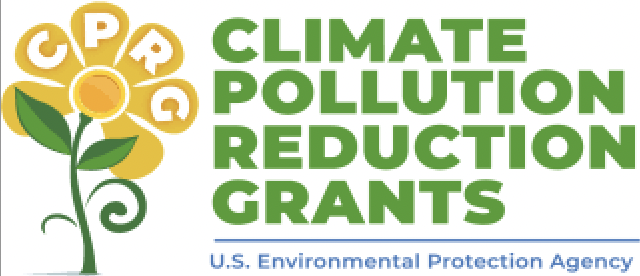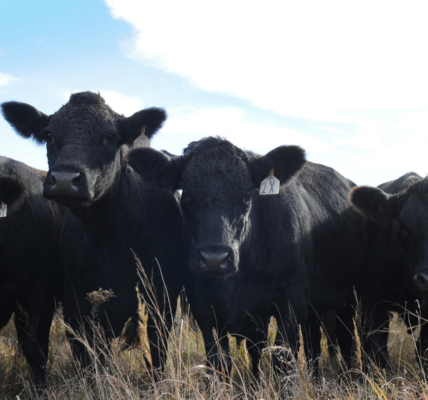
• EPA pulled a “bait-and-switch,” the governor said in turning down millions of federal dollars to reduce carbon emissions.
By Dustin Bleizeffer, WyoFile.com
Wyoming will not participate in the federal Climate Pollution Reduction Grant program, deciding instead to turn down $3 million and an opportunity to apply for more funding from the $4.6 billion federal effort.
The U.S. Environmental Protection Agency, Gov. Mark Gordon said, insisted on revising the state’s draft “Cowboy State Pollution Reduction Plan” application and removing flexibility for how the state could spend federal dollars from future Climate Pollution Reduction Grant awards.
“For Wyoming, this amounts to a classic bait-and-switch,” Gordon said in a prepared statement this week.
The CPRG program, funded via the Inflation Reduction Act, aims to help states reduce “greenhouse gas emissions and other harmful air pollution,” according to the EPA.
More simply, the EPA wants to fund the home-grown climate-pollution-reduction plans states will use to comply with a flurry of climate and environment rules coming down the pike.
But negotiations between the Wyoming Department of Environmental Quality and the EPA on developing a Wyoming plan didn’t go well, Gordon said. He concluded that the “EPA will turn Wyoming and other states’ planning efforts upside down into a mandate to prematurely shut down Wyoming’s ‘all-of-the-above’ energy development approach,” he wrote in a Nov. 30 letter to EPA Administrator Michael Regan.
“EPA worked closely and constructively with Wyoming to incorporate the state’s feedback into its CPRG grant documents,” EPA Communications Director Nick Conger told WyoFile. “In the case of Wyoming, we prepared an award amendment that addressed its requests and aligned with its submitted work plan.”
While individual municipalities may also apply to the program to collaborate with EPA on climate pollution reduction efforts, Conger said, “with the state’s withdrawal, most communities across the state will no longer have the opportunity to collaborate on a plan to cut pollution or to apply for the $4.6 billion in additional CPRG funds to implement these types of innovative projects.”
However, EPA is still exploring whether Wyoming’s two largest cities might still be eligible to participate.
Meantime, Gordon proposes adding $3.4 million to Wyoming DEQ’s biennial budget of about $174 million, citing ongoing demands of meeting federal mandates.
“This overall proposal of $3.4 million at DEQ is necessary for Wyoming to control her own destiny in the current environment of federal activism,” Gordon said in his budget letter to the Legislature.
Loggerheads with EPA
Though Wyoming has won numerous federal grants — including several Department of Energy energy innovation programs — Gordon’s “all-of-the-above” energy strategy and approach to making Wyoming a “carbon negative” state frequently clash with the EPA’s federal climate and pollution rules. A row over regional haze controls at the Jim Bridger coal-fired power plant near Rock Springs in 2022, for example, prompted potential “corrective actions” by EPA that would have shut down half the power plant.
The Jim Bridger showdown, the EPA’s proposed power plant rule and the agency’s final “methane rule,” all exemplify the federal government’s “heavy-handed” approach, according to Gordon, and threaten Wyoming’s aims for carbon capture and keeping the state’s fossil fuels in the nation’s energy mix.
“EPA’s pending 70 air quality rules this year will heap a massive amount of new federal requirements on Wyoming that will have lasting significant economic impacts for Wyoming citizens, create regulatory uncertainty and require states to do more with less,” Gordon wrote to Regan.
Just a few months ago, Gordon hosted Regan on a tour of Wyoming and both agreed to continue to work on technology advancements to launch commercial-scale carbon capture. Whether Wyoming’s overall climate-and-fossil-fuels approach is on pace with the Biden administration’s climate priorities is another, more complicated legal matter, Regan said.
The EPA is “exploring opportunities through regulation and innovative technologies on how we begin to control those [carbon dioxide] emissions so that we don’t exacerbate the climate crisis,” Regan told reporters in Laramie in August. “I think [President Biden] has been very clear that we believe that we must respond with a sense of urgency.”
WyoFile is an independent nonprofit news organization focused on Wyoming people, places and policy.




